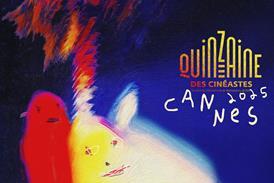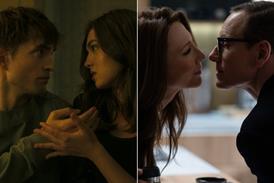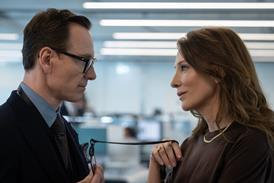Sundance’s John Cooper and Trevor Groth celebrate the US and international independent scene ahead of the festival’s 30th anniversary. Jeremy Kay reports.
John Cooper and Trevor Groth have about as much use for platitudes and soundbites as the Sundance Film Festival has for a studio tentpole in its 120-strong selection.
Over the course of a 30-minute interview, the festival director and his head of programming – as knowledgeable and self-deprecating a pair as you will meet in the senior festival ranks – prefer to explore ideas and passions rather than recite tedious corporate lines that stay on message.
What becomes clear, if it were not already evident from watching the festival’s progression in recent years, is that on the eve of its 30th anniversary edition Sundance remains as committed as ever to fostering global independent voices.
“In the festival’s 30 years independent film has become such a part of the cultural landscape,” says Cooper, who has been at Sundance for 25 years (Groth has been in situ for 20).
“It’s an art form almost unto itself outside of Hollywood and young people now know what independent film is. Also you cannot ignore technology and its influence on the films. Film-makers have a lot more freedom.
“A lot of the film-makers are influenced by the near past. That bar gets set every year at Sundance if you look at Fruitvale [Station] and Beasts Of The Southern Wild and Precious before that.
“They feel that. They know it. They are influenced by other American film-makers that came before them. Even 10 years ago it was looking more to the Europeans and older films for inspiration and now they’re being inspired by each other.
“One thing that we see in this year’s group of films versus historically from when we began is the completeness of visions,” adds Groth. “The aesthetic excellence across the board of these films is as high as it’s ever been.”
Alongside those aesthetics, acquisitions executives will be looking for the hottest titles to acquire. These could include Damien Chazelle’s Whiplash and Jim Mickle’s Cold In July in US Dramatic Competition and Stuart Murdoch’s UK musical God Help The Girl in World Cinema Dramatic Competition.
Programme evolutions
Sundance is attacking on all fronts. Groth notes that the expanded Next section will now encompass 11 films and expresses satisfaction over the evolution of the World Cinema Dramatic programme.
“Lately it’s been taking shape the way we always hoped it would. It’s starting to mirror what we’ve tried to do in our US competitions and discover independent voices wherever they may be.
“This year we’ve discovered some in really interesting places where we don’t normally get films from like Ethiopia, Tanzania, Bulgaria and Serbia.”
Technological advances mean Cooper, Groth and their programming team must now sift through more submissions than ever – overall there were 12,218 for this year’s festival – and watch more rough cuts.
The number of awards season wins and nominations for the likes of Fruitvale Station, Blackfish and The Crash Reel serves as reminder that Sundance is the pre-eminent North American agenda-setter for the independent year ahead.
Yet the organisers love their audiences and film-makers and have no plans to expand the line-up. “It starts to lessen the impact of the films you’re showing,” says Groth. “How many films are people going to see in 10 days? Forty, tops? So to add to that doesn’t make sense. And it keeps up sharp.”
“With documentaries in particular we’re seeing a new type of film that’s very topical now because there’s such a short window between something happening and making it on to the screen,” says Cooper. “Much more so than 10 years ago.”
“The docs are changing policy, like Blackfish – cracking issues open. Docs can go deeper and expose things for what they are sometimes, which makes people take notice.” This year’s selection, Cooper stresses, is a corker.
Potential highlights include Katy Chevigny and Ross Kauffman’s Human Rights Watch story E-Team, Syria-set Return To Homs by Talal Derki and Nadav Schirman’s The Green Prince about Hamas and Shin Bet.
New Frontier is returning to its Main Street roots and features work by renowned multimedia artist Doug Aitken and the projection-mapping troupe Klip Collective’s eye-catching homage to Sundance hits on the façade of The Egyptian Theatre.
“People will fall into New Frontier just by being out and about at night,” says Cooper, adding that the installations will allow the festival to reclaim the main drag. “It won’t seem like someone else’s street.
While it is a favourite parlour game of commentators to retro-fit themes into the overall selection, Cooper notes an interesting development in the way film-makers are telling stories.
“A bit of a trend is the use of genre. It’s always been big in [Park City At] Midnight, but now a lot of film-makers use genre to get you into a story. So there’s the horror genre in Life After Beth, which is a love story with a dead girl, and Jamie Marks Is Dead, has a big ghost story in it.”
Heavy hitters this year include Michael Winterbottom with A Trip To Italy reuniting Steve Coogan and Rob Brydon, Anton Corbijn’s first Sundance entry with A Most Wanted Man and Gareth Evans’ anticipated The Raid 2.
Returning to the broader perspective, Sundance London enters its third year and Cooper and Groth are gratified by its reception. Long-term plans are afoot to export the festival to another part of the world.
“[Sundance London] gives a lot of value and strength to the festival,” says Groth, “because we see the films can work there and there are audiences for them.”
























No comments yet